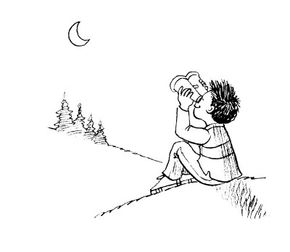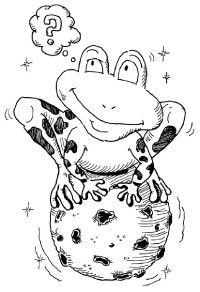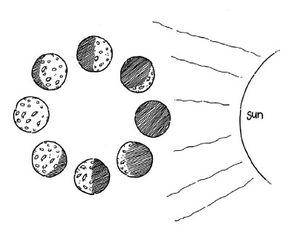Learn what causes the phases of the moon by making moon models with two friends in this science project for kids: the moon.
Many people think that the moon's phases are caused by the shadow of the Earth moving across the face of the moon, but that isn't true. When the earth's shadow blots out the moon, we call this a lunar eclipse. To find out what really causes moon phases, do this simple demonstration with two friends.
What You'll Need:
- Two friends
- Flashlight
- Softball or similar-sized ball
Step 1: Decide which of you is taking what part in the models. One person, holding a flashlight and standing near a garage in the dark will be the sun. A second person, standing a few feet away, will be the Earth. The third person, the moon, will carry a softball "in orbit" around the Earth.
Step 2: Have the "moon" stand directly between the "Earth" and the "sun."
The "Earth" should see the unlit side of the moon. This is what happens when we see a new moon. We're seeing the "night side" of the moon.
Step 3: Ask the "moon" to move left of the "Earth." Now the Earth should see the sun side of the softball lit up and the other side in shadow. This represents a "first quarter" moon, which is really a half-moon.
Step 4: Have the "moon" stand in back of the "earth." Enough light should reach the softball to light up the whole side that faces the "Earth." This represents a full moon.
Step 5: Ask the "moon" to move to the right of the "Earth." Again, the "Earth" should see half the ball lit up and half in shadow. This represents the last quarter moon. Like the first quarter moon, this is really a half-moon.
Step 6: Track the actual moon for a month. This is easy to do when the moon is full, because it rises just after sundown, but after that, the moon rises and sets later. Do you ever see the moon in the day? Can you figure out why?
For more fun science projects for kids, check out:
ABOUT THE DESIGNERS
Explore the Moon with Binoculars by Maria Birmingham, Karen E. Bledsoe, and Kelly Milner Halls Moon Models by Maria Birmingham, Karen E. Bledsoe, and Kelly Milner Halls


